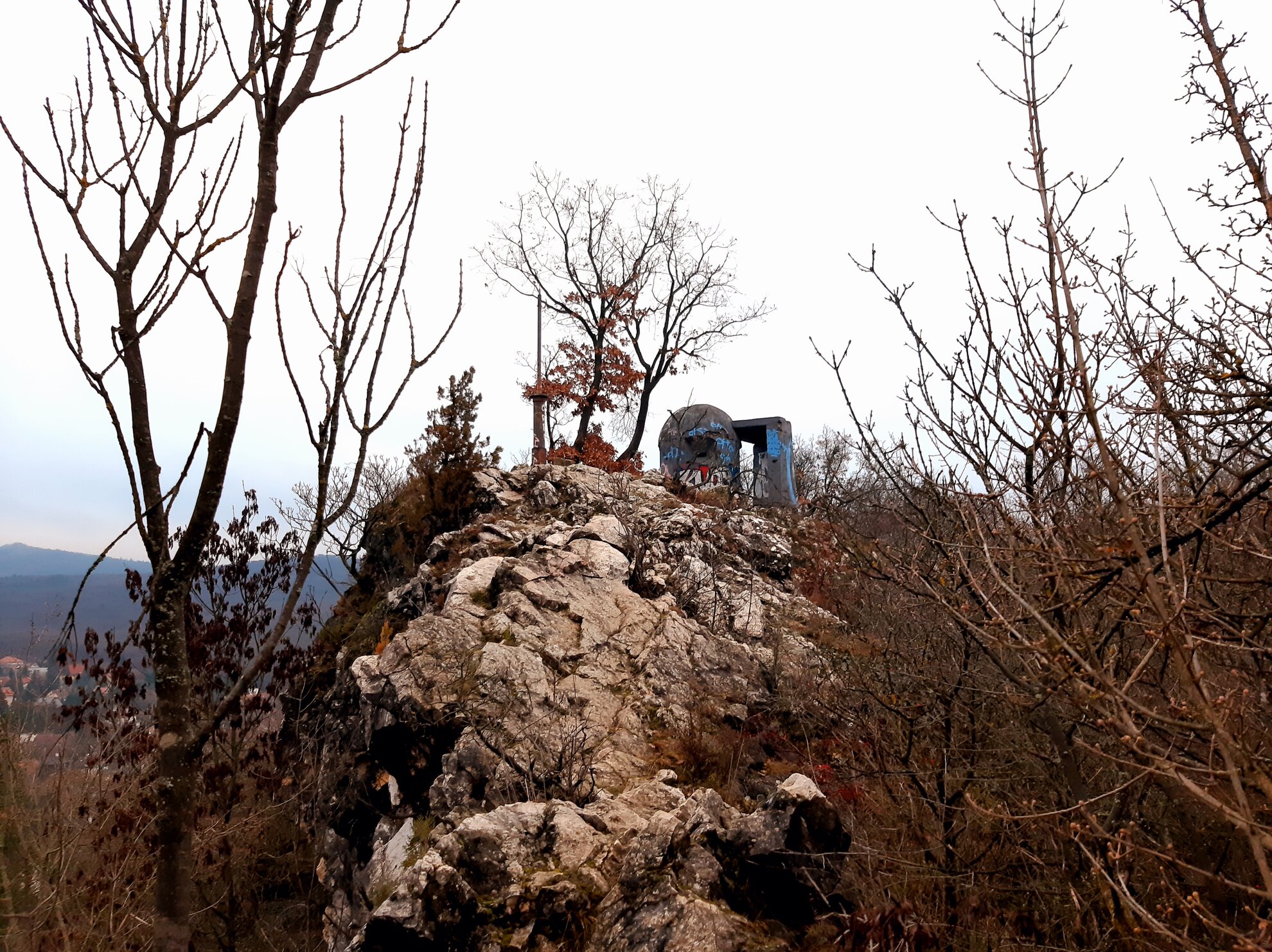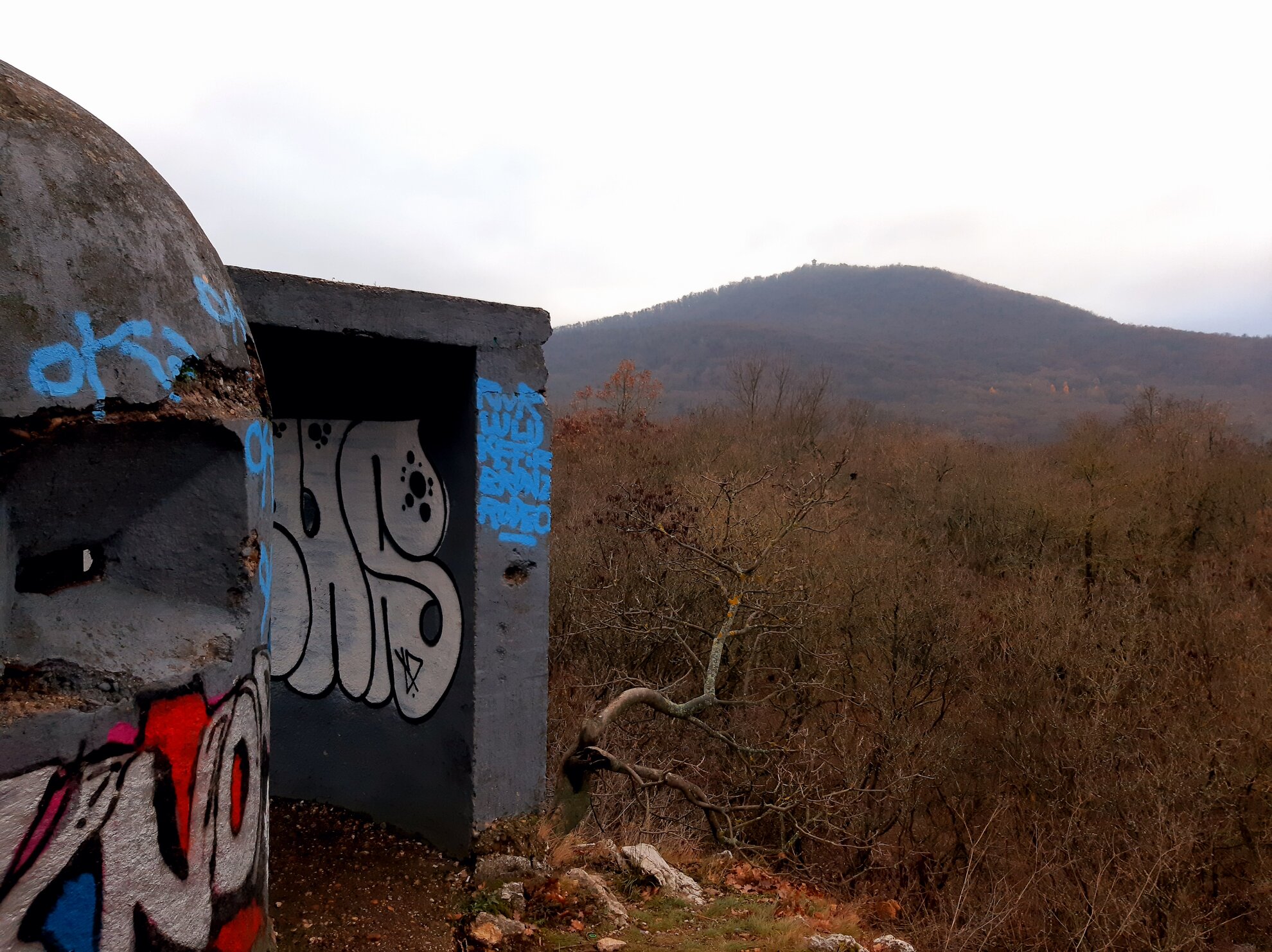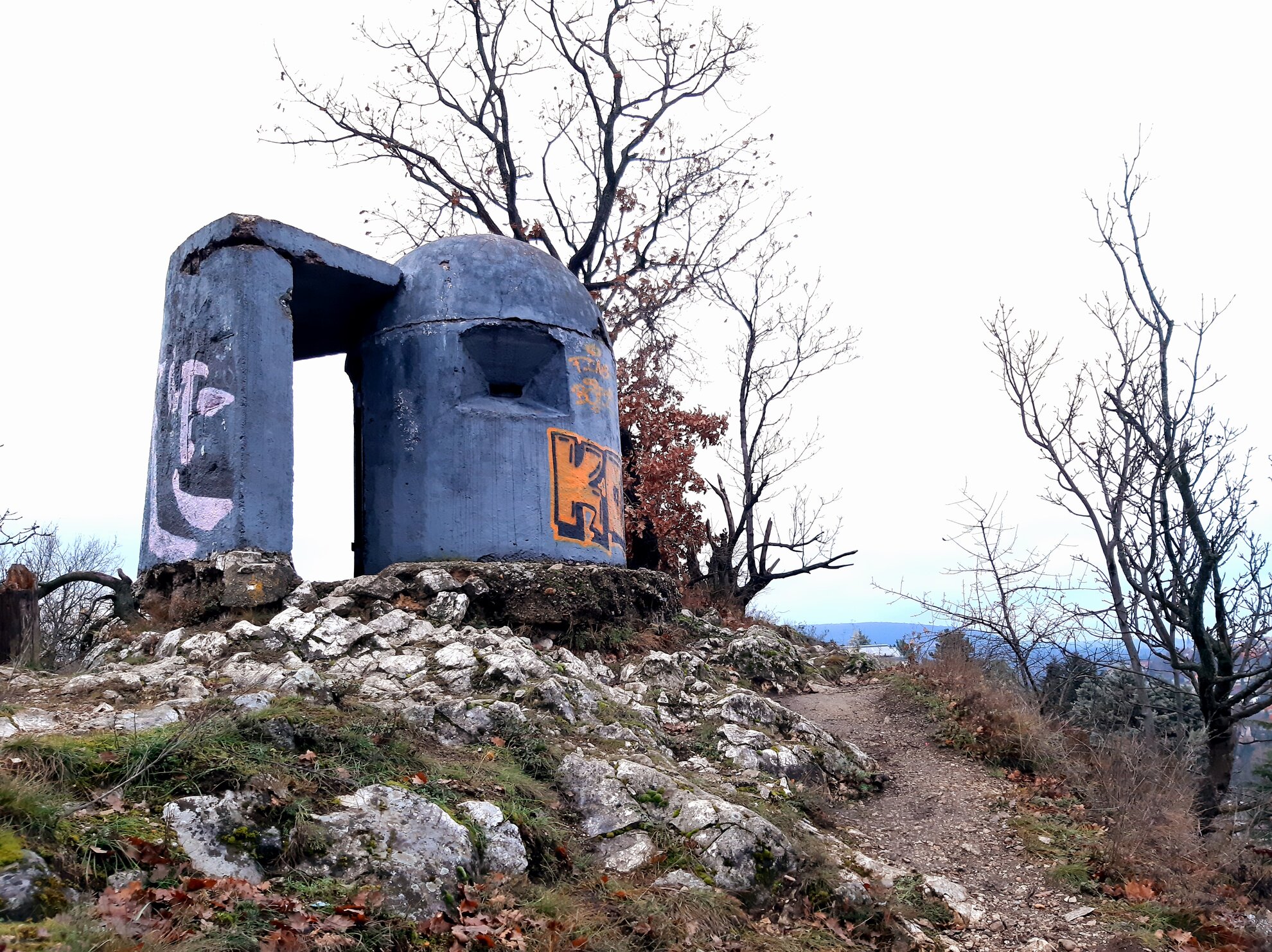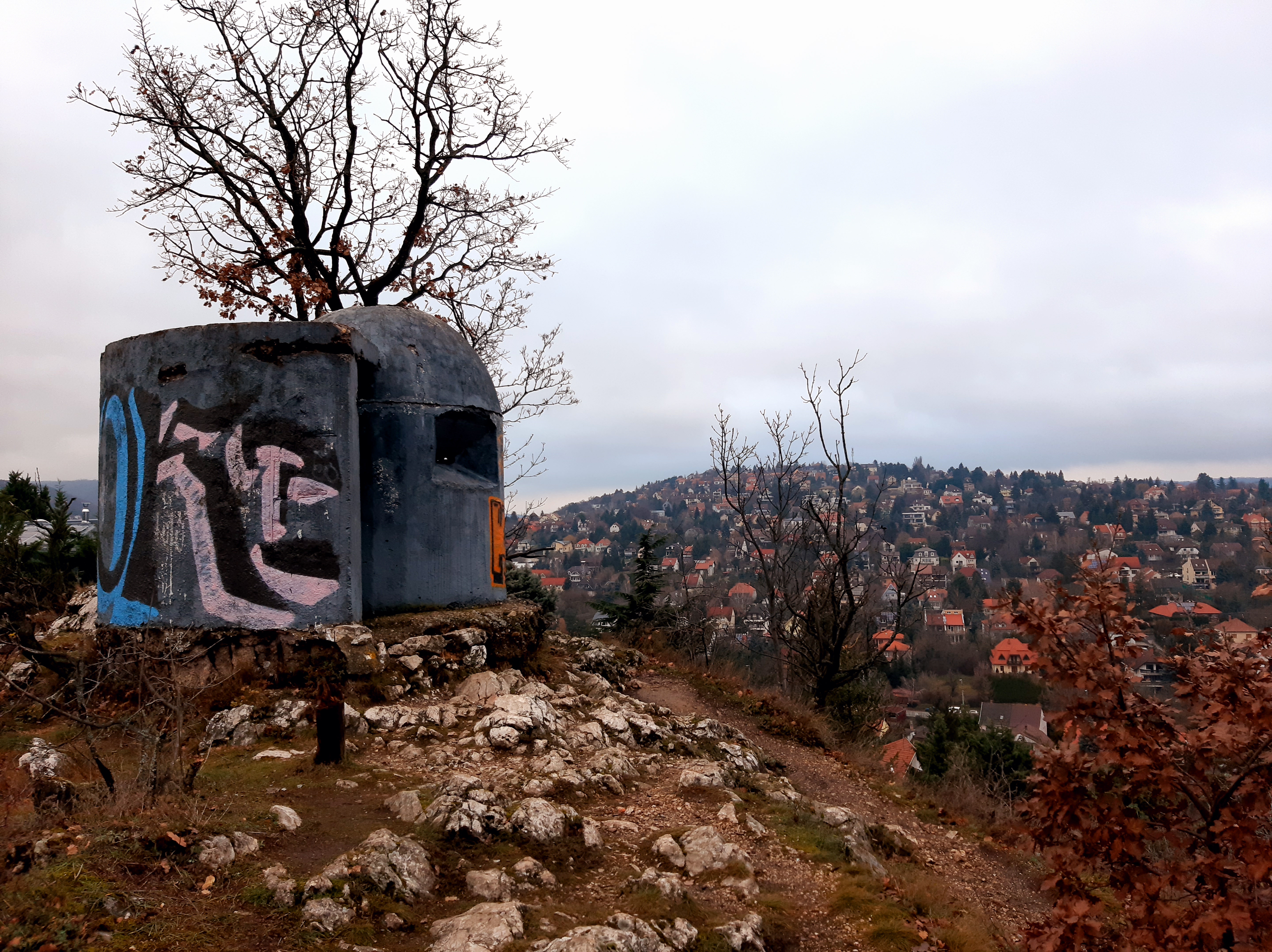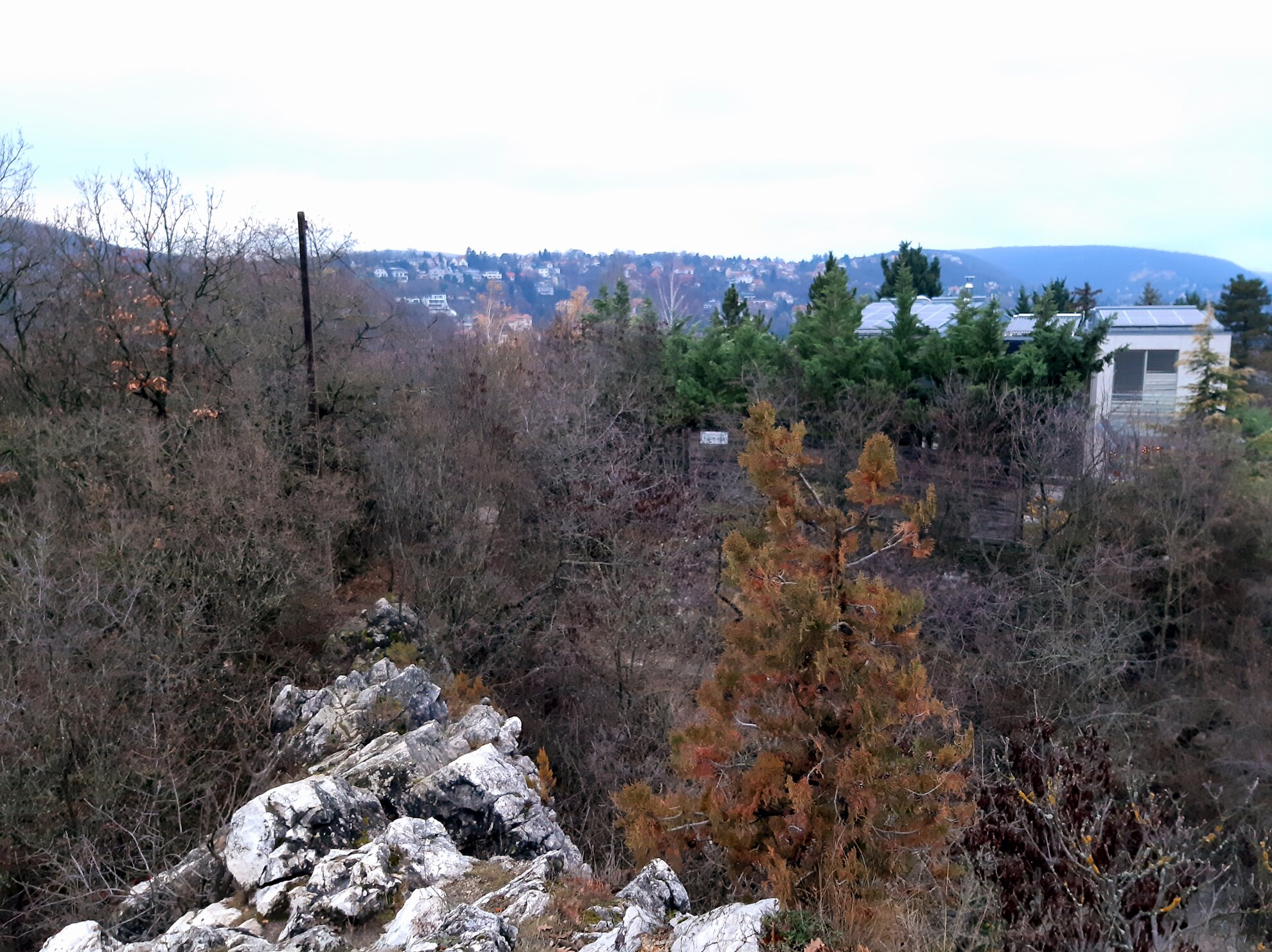
Rising
between Nagy-rét in Hűvösvölgy and the nearby community of Remetekertváros is 281-metre-tall Fazekas hill, composed of Dachstein limestone and whose exposed
parts are seen in yellowish-white rock outcroppings.
The dolomite and limestone
was mined from the hill until the end of the 19th century, and used as a
construction material for public buildings around Budapest. The quarry was also
an unparalleled site for geological rarities, minerals and remains of primates
– so much so that it was looted significantly and has been under capital
protection since 1982.
There
is no shortage of protected animal and plant species in the area, but for now – this December, at least – you are limited to a much more modest version of local natural wonders.
As
you arrive at the Hűvösvölgy tram and bus stops, you must backtrack to the stairs marked with blue and yellow signs, which takes you to the Children’s Railway.
From here, you turn to the right, following the markers down the
road and through a tunnel.
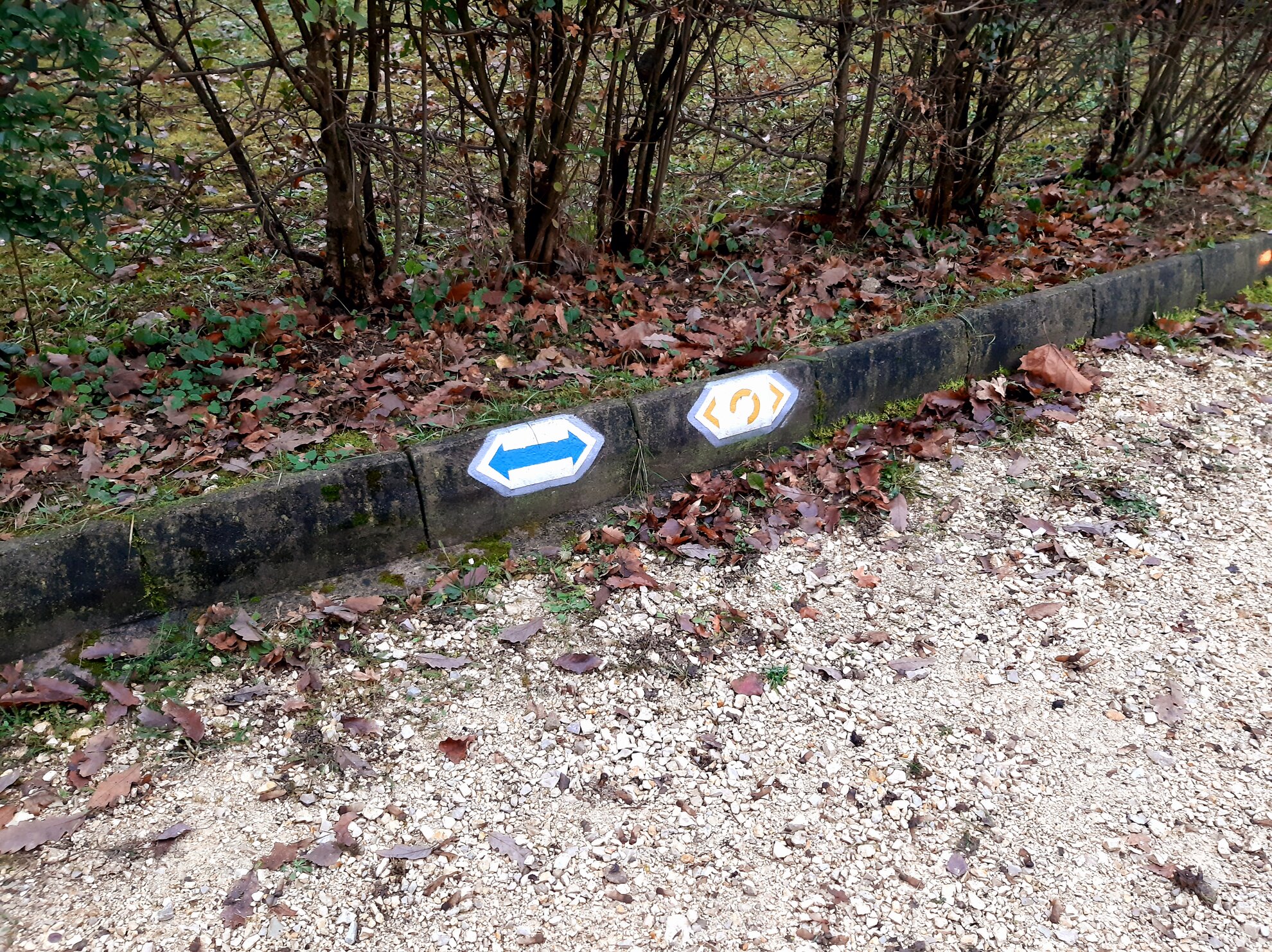
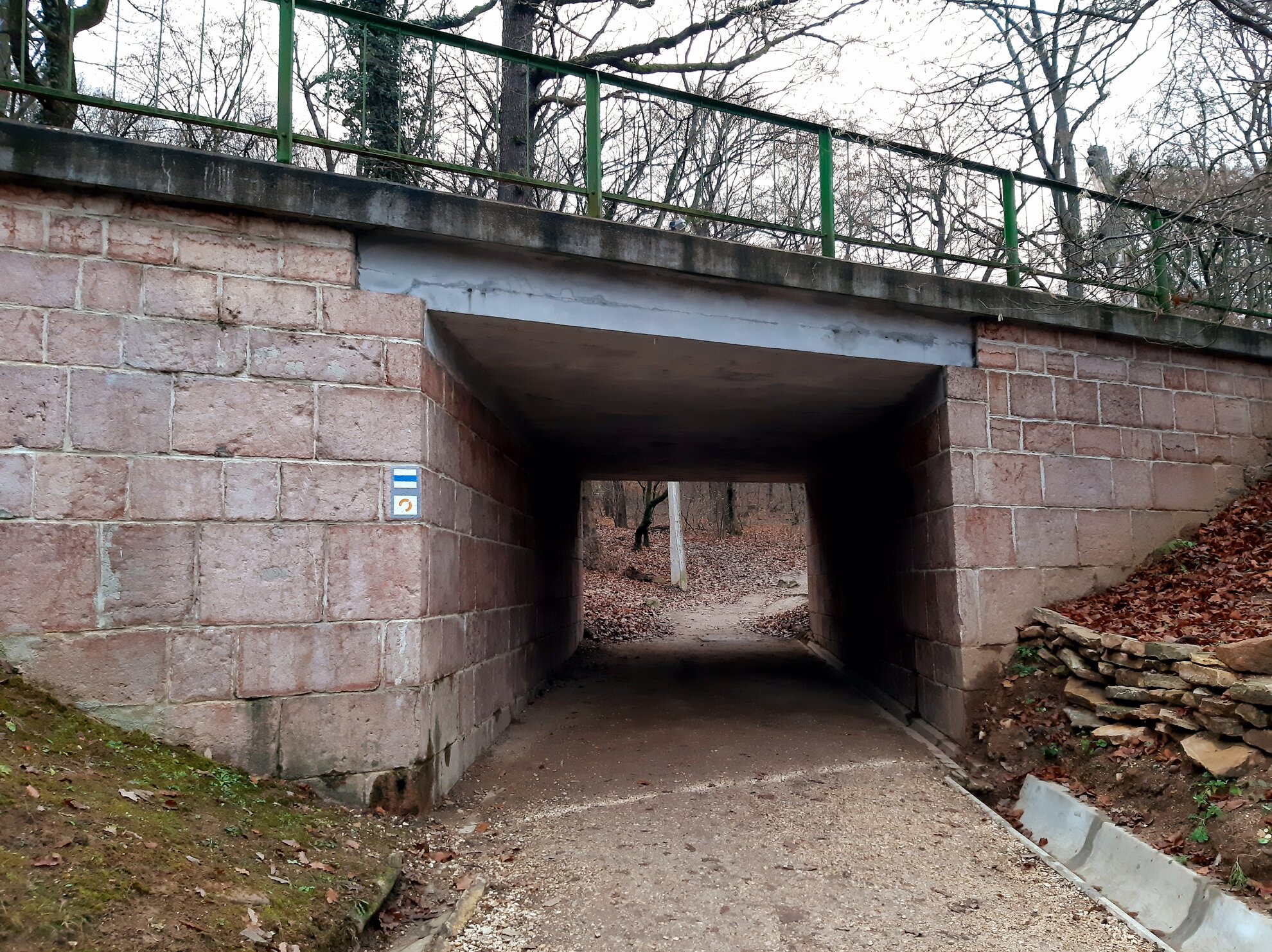
You enter a wood where, for a short time, the path remains rather wide and level, accompanied by light poles. Eventually, you turn right at the sign with the yellow circle, which leads you into the depths of the forest. A blue triangular sign indicates the viewpoints.
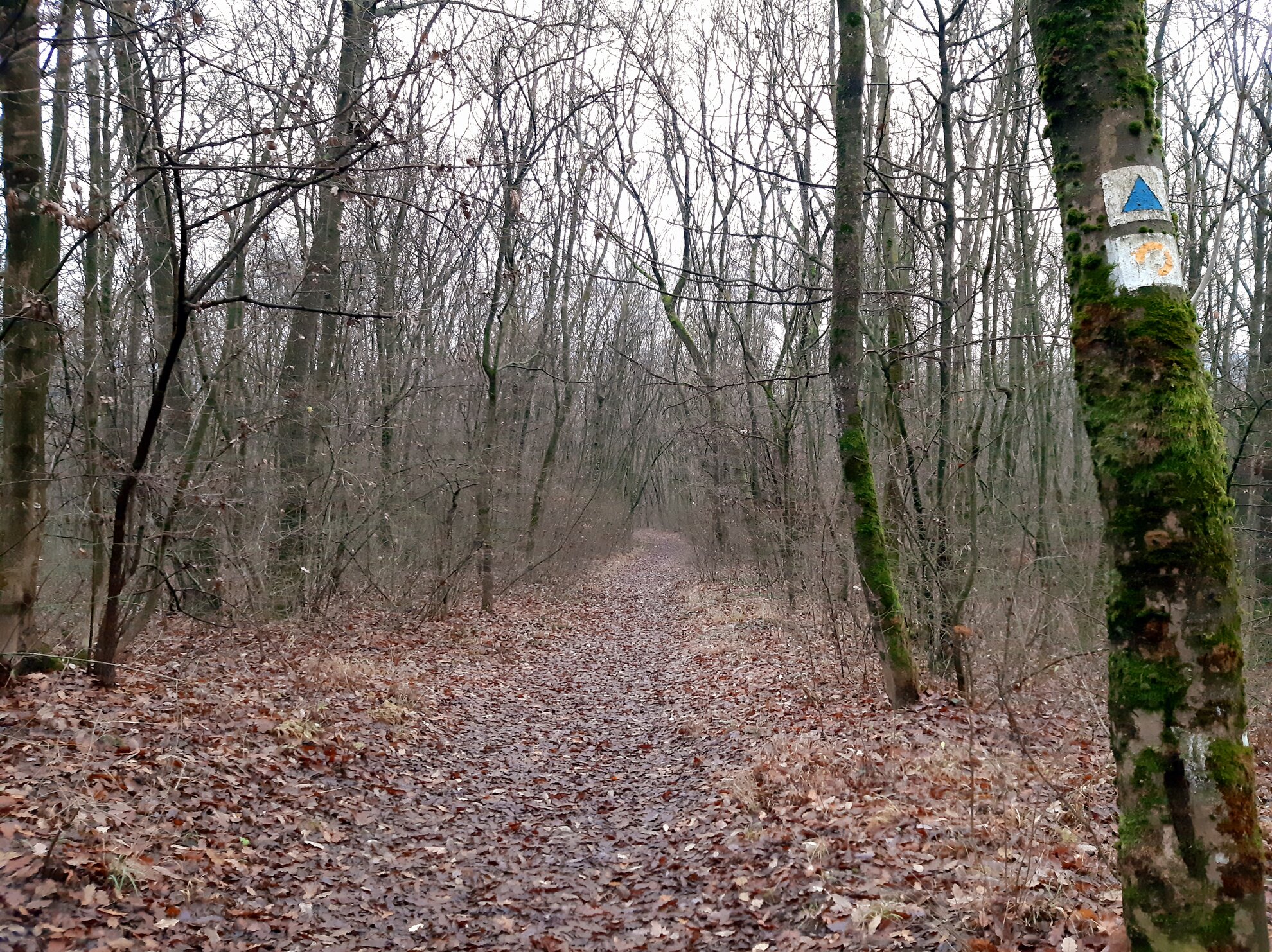
You quickly feel the bite of fresh air, but you’re not so far away from civilisation that
you can’t hear the squeaking of nearby tram wheels. The path is covered with wet
oak leaves, so you take care as you walk, as slippery rocks peek out of the
ground to catch you unawares.
After a while, you see a path rising to the right-hand side, with the blue triangular sign next to a large
rock formation. The grey cone of the bunker can be spied through the bare
winter trees.
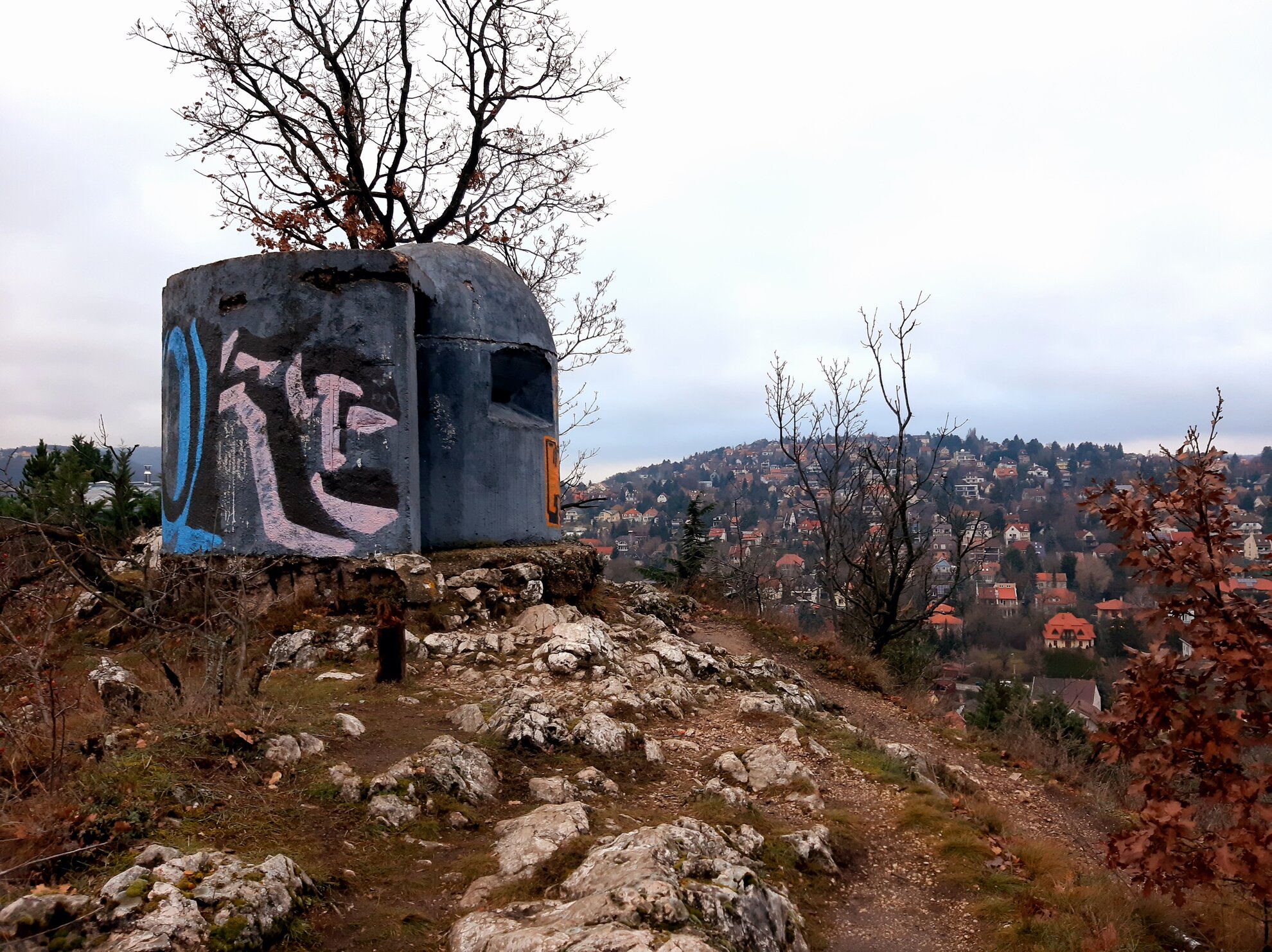
A
few bullet marks can still be seen on the outside of the bunker, harking back
to the old shooting range in the area during World War II. It is a special
experience to climb to the top of the cliffs: you feel like you are standing on
the loneliest lookout point in the Buda hills, where even the birds do not
enter.
Of course, it’s not quite so desolate – a bird or two makes this clear
by darting out of the woods somewhere overhead.
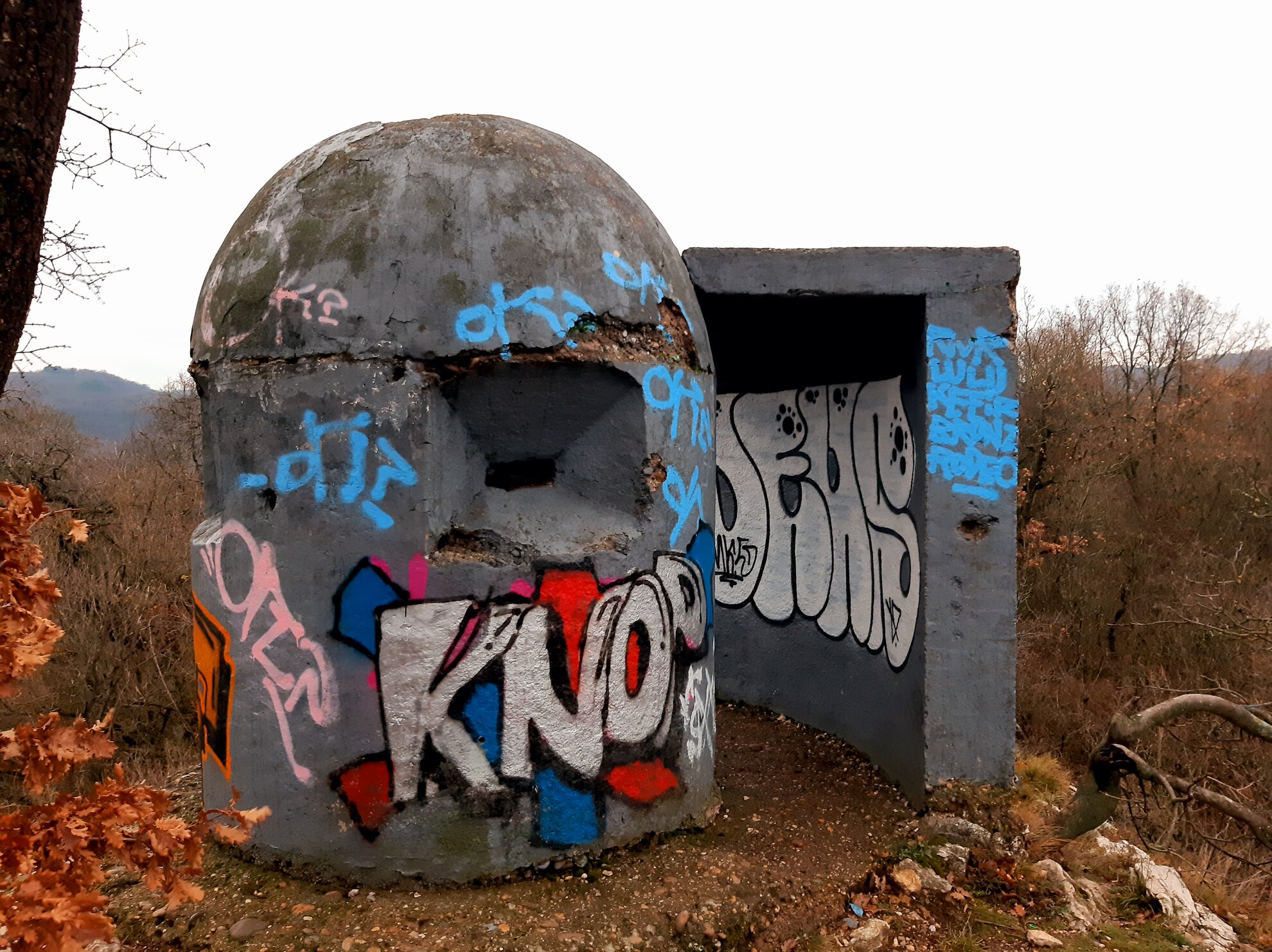
The bunker also has the advantage of great orientation: to the south you see Nagy-Hárs hill and the Kaán Károly lookout tower. To the east stretches the edge of the city, and the back of notable Apáthy rock. To the north, you can’t miss Máriaremete and the houses of Remetekertváros, and in the background – covered with fog – the ridge of Hármashatár hill.
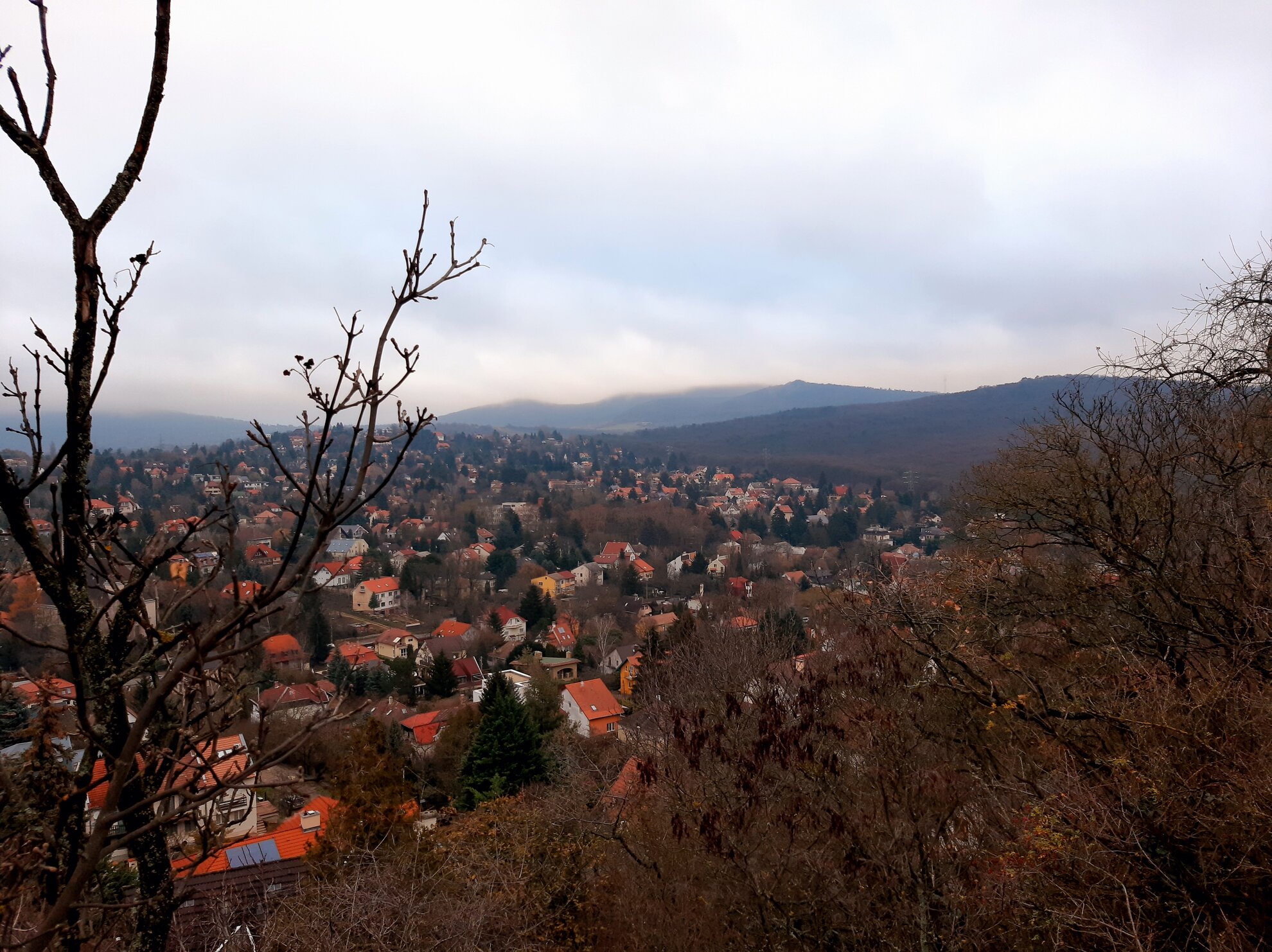
It’s clear that the area is used for social gatherings by local teenagers – old soft-drink bottles litter the ground and graffiti covers the old concrete structure. But it can be a romantic spot as well, as the Buda hills provide seclusion, serenity and the chance to scamper through this undulating, wild terrain.
Continuing to follow the yellow circular signs, you reach Nagy-rét in Hűvösvölgy. From here, you come back to the blue marker. You can then continue towards Pilicsaba or, for a longer hike, Remete gorge.
